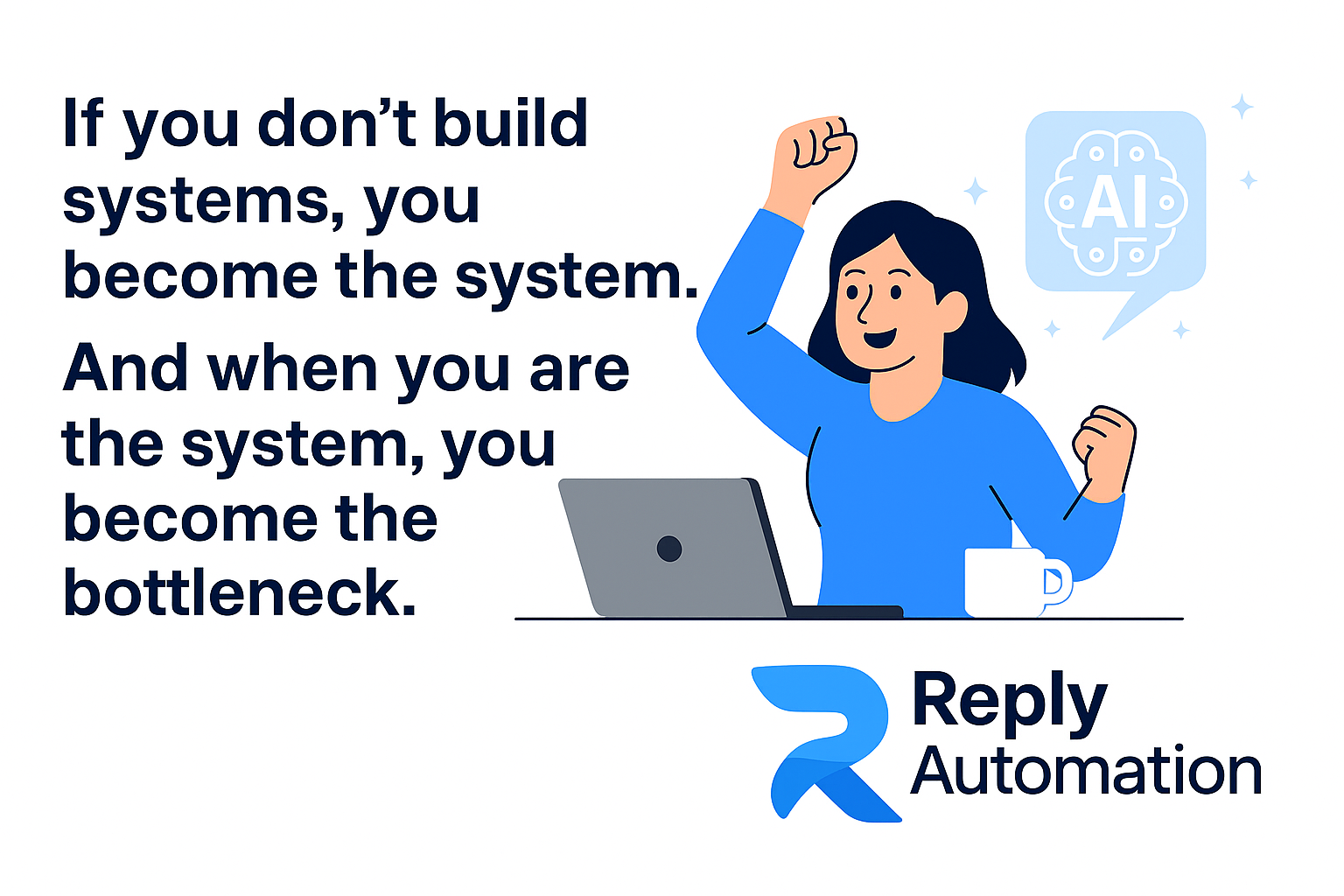Stop Settling for Weak Internal AI - Here's How to Build a Beast
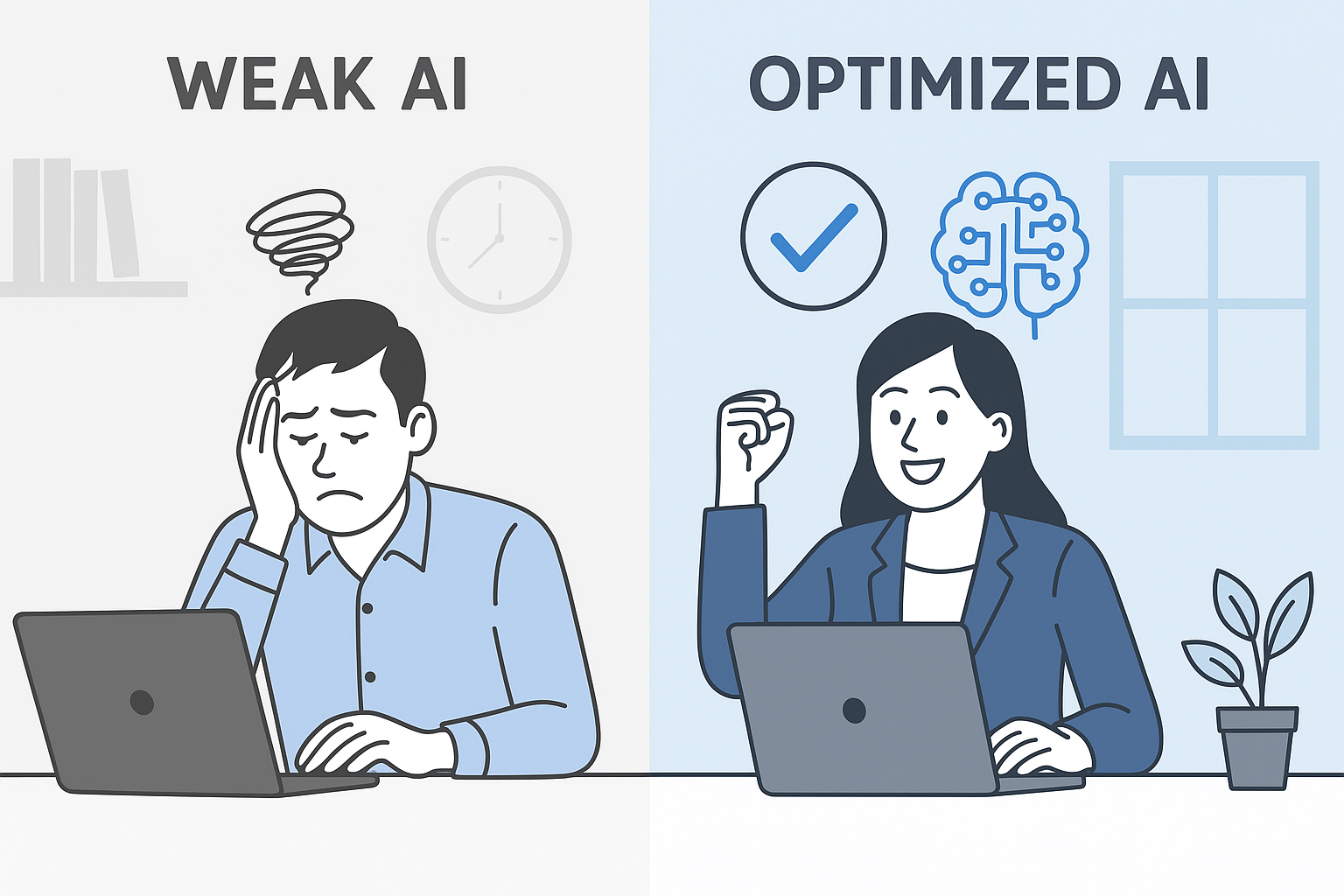
You've got access to your company's internal AI chat. You open it up, excited to have your own ChatGPT at work. You ask it a question about your product and... it gives you a generic, useless response that could apply to any company.
Disappointed? You should be. But here's what nobody's telling you: that AI has the exact same brain as ChatGPT or Claude.
Yeah, you read that right. The same powerful language model. The same billions of parameters. The same capability to generate brilliant responses.
So why does yours suck?
Because nobody taught it about YOUR business. It's like hiring a genius who knows everything about the world but nothing about your company. They're smart, but useless—until you train them.
The difference between companies crushing it with AI and companies wasting money on "dumb" chatbots isn't the technology. It's the setup. And I'm about to show you exactly how to transform your disappointing AI into the most valuable tool your team has.
The Brutal Truth About Your Internal AI
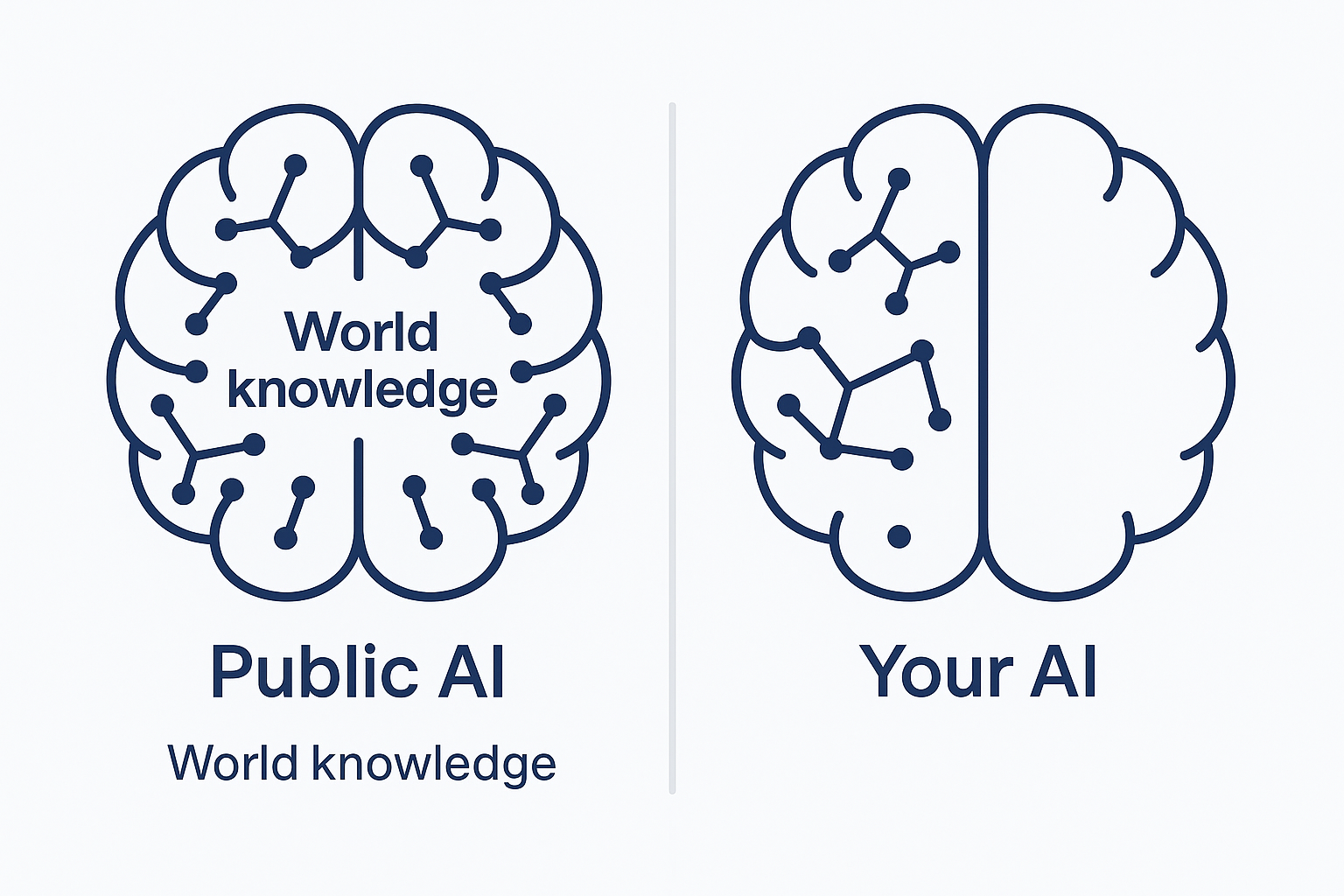
Your internal AI platform isn't a downgraded version of public AI. When you select GPT-4 or Claude in your system, you're getting the real deal—the same model that powers the public versions.
But public AI has been fed the entire internet. Your internal AI? It only knows what you tell it.
That's actually your super-advantage, because once configured correctly, your AI will know:
- Your exact products and how they work
- Your company's specific processes and policies
- Your industry's regulations and requirements
- Your customers' common problems and solutions
- Your competitive positioning and messaging
No public AI can compete with that. But you have to set it up right.
Most companies don't. They upload some random PDFs, write "you are a helpful assistant" as their prompt, and wonder why it's useless.
Don't be most companies.
The 3-Part Formula That Changes Everything
Forget complex AI theory. Building a powerful internal AI comes down to three things:
1. Feed it the right knowledge (your knowledge base)
2. Give it clear instructions (your system prompt)
3. Control how it responds (your parameters)
That's it. Master these three, and your AI goes from "meh" to "holy shit, this actually works."
Let me show you exactly how.
Part 1: Your Knowledge Base - Feed the Beast
Think of your knowledge base as your AI's education. What you include determines what it knows. What you exclude means blind spots.
What actually matters:
Stop dumping every document you have into the system. That creates noise. Be strategic:
- Product documentation - How your stuff actually works, not marketing fluff
- Process guides - Your SOPs, workflows, the way things actually get done
- Common solutions - FAQ responses, support tickets, solutions that worked
- Company-specific language - Your acronyms, internal terms, product names
- Rules and boundaries - Compliance requirements, what you can and can't promise
The secret nobody tells you:
Create documents SPECIFICALLY for your AI. Don't just upload existing materials—write clear, simple explainers. Your AI doesn't need fancy formatting. It needs clarity.
Example: Instead of uploading a 200-slide product presentation, create a clean document:
# Product: HealthTrack Pro ## What it does Medical device software for patient monitoring in hospitals ## Key features - Real-time vital sign tracking - HIPAA-compliant cloud storage - Integration with Epic and Cerner EHR systems - Mobile app for physicians - Automated alerting for critical values ## Common customer questions Q: Is it HIPAA compliant? A: Yes. Full HIPAA compliance, BAA available, SOC 2 Type II certified Q: Which EHR systems integrate? A: Epic and Cerner, with HL7 and FHIR API support
Clean. Simple. Easy for AI to parse and reference. That's what wins.
Part 2: System Prompts - Your AI's Personality and Rulebook
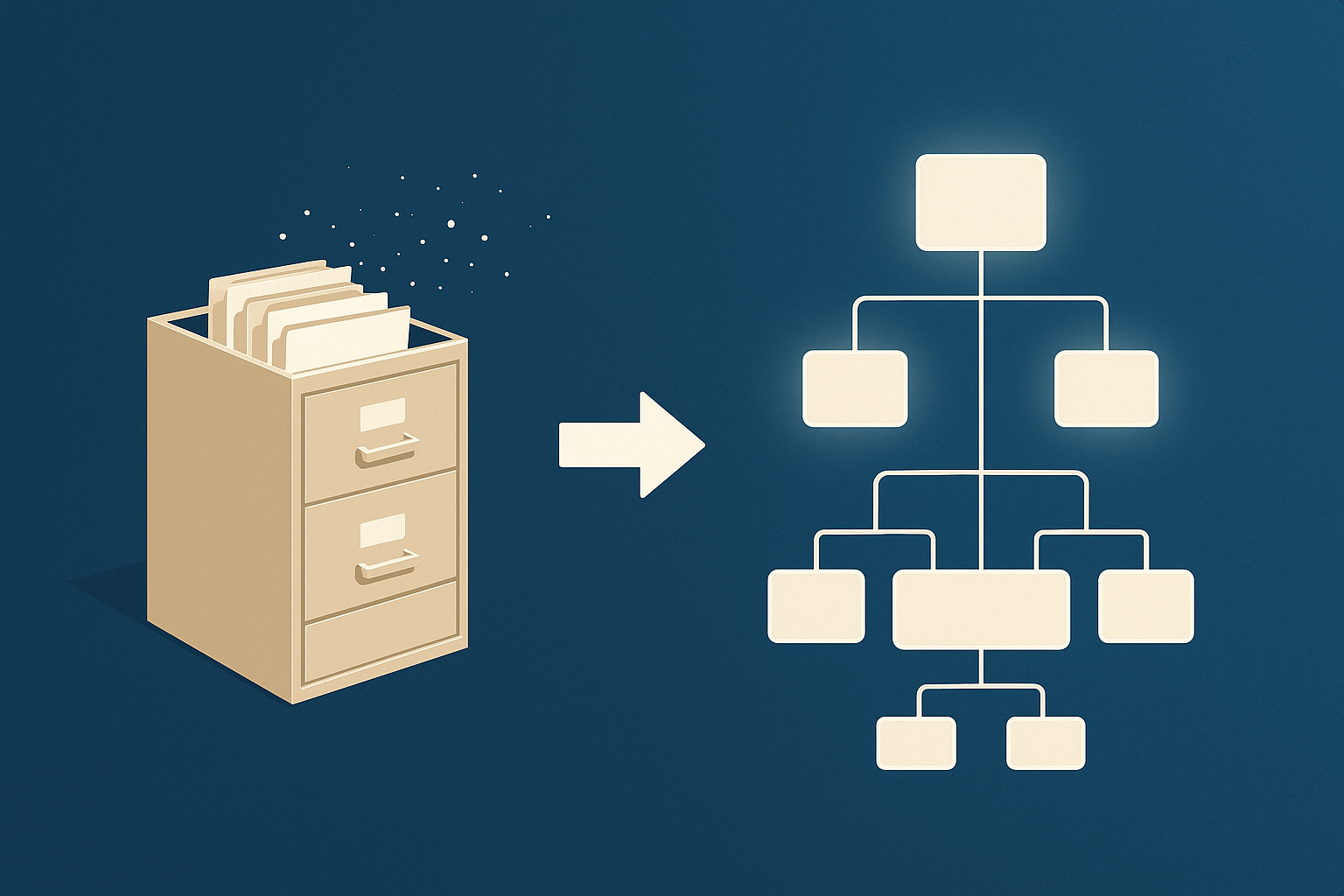
This is where the magic happens. The system prompt is invisible to users, but it controls everything about how your AI behaves.
Most people write: "You are a helpful assistant."
That's like telling a new employee: "Do good work." Zero useful guidance.
Here's what actually works:
Give your AI an identity, expertise, communication style, and boundaries. Be SPECIFIC.
Bad: "Help users with questions."
Good: "You are the support AI for MedTech Solutions. You help our customer service team answer questions about HealthTrack Pro medical software. You provide clear, step-by-step solutions. You NEVER give medical advice. You ALWAYS escalate data security questions to the Security Team."
See the difference? The second one gives the AI a role, context, behavior rules, and boundaries.
The framework that works every time:
WHO: You are [specific role] for [company name] WHAT: Your purpose is to [primary objective] HOW: You communicate by [style guidelines] - Be [tone] - Use [format preferences] - Include [required elements] RULES: Always: [required behaviors] Never: [prohibited actions] When [scenario]: [specific instruction] BOUNDARIES: For [situation] → escalate to [team/person]
This isn't theory. This is the actual formula. Fill in the brackets with your specifics, and you've got a system prompt that transforms your AI.
Part 3: Parameters - Fine-Tune the Output

Parameters control HOW your AI generates responses. Two settings matter most:
Temperature (0 to 1):
This controls creativity vs. consistency.
- Low (0.1-0.3): Robot mode. Same input = same output. Perfect for support, technical docs, compliance.
- Medium (0.5-0.7): Balanced. Natural but reliable. Good for most business use.
- High (0.8-1.0): Creative mode. Different every time. Use for brainstorming, content creation.
Response Length:
How many words (tokens) the AI can use.
- Short (300-600 tokens): Quick answers, busy teams, mobile use
- Medium (800-1200 tokens): Detailed explanations, troubleshooting
- Long (1500+ tokens): Complex analysis, reports, deep dives
That's it. Ignore the other 47 parameters until you master these two.
The Complete Walkthrough: Building Your First Custom Model
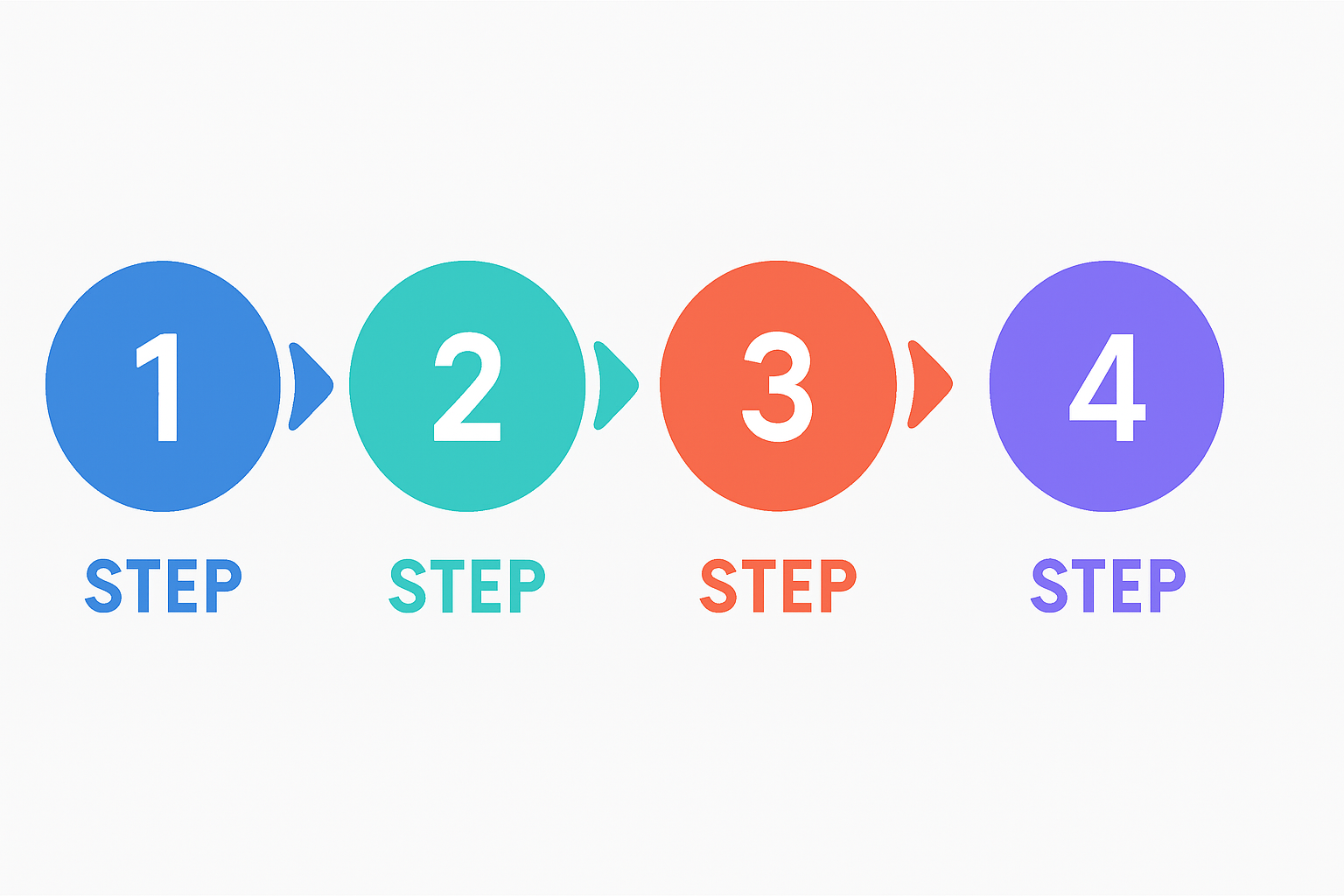
Enough theory. Let's build a real AI model from scratch. You work at MedTech Solutions, and your support team is drowning in repetitive questions. Time to fix that.
Step 1: Create Your Model
Log into your internal AI platform. Look for "Models," "AI Configuration," or "Create Assistant."
Click "Create New Model."
You'll see fields for:
- Model Name
- LLM Selection
- System Prompt
- Knowledge Base
- Advanced Parameters
Let's fill them out like a pro.
Step 2: Name It and Pick Your Brain
Model Name: Support Assistant v1
Keep it clear. You'll have multiple models eventually. Version numbers help track iterations.
LLM Selection: Claude Sonnet 4.5
Why Claude? It follows instructions precisely and maintains tone consistency—perfect for support. GPT-4 works too, but Claude edges it out for structured, rule-following tasks.
Step 3: Write Your System Prompt (The Game Changer)
Here's the exact prompt you'd enter:
You are the MedTech Support Assistant. Your job: help our customer support team resolve issues with HealthTrack Pro medical software. IDENTITY: You're an expert support specialist with deep product knowledge and empathy for frustrated users. YOUR KNOWLEDGE: You have complete access to product docs, troubleshooting guides, compliance info, and proven solutions. COMMUNICATION STYLE: - Clear and concise - support agents need fast answers - Step-by-step instructions when solving problems - Empathetic tone - acknowledge user frustration - Simple language - avoid jargon unless necessary - Always include relevant doc references WHAT TO ALWAYS INCLUDE: - Most likely solution first - Expected resolution time - Escalation path for complex issues - Reference to specific documentation ABSOLUTE RULES - NEVER: - Give medical advice (we're software, not doctors) - Make promises about features or timelines - Share patient data or PHI - Bypass security protocols - Create custom pricing or contracts ESCALATION PATHS: - Security/PHI questions → Security Team - Product bugs → Engineering ticket - Billing issues → Billing Department - Clinical/medical questions → Clinical support resources YOUR GOAL: Empower agents to resolve issues quickly while staying compliant and keeping customers happy.
See how specific that is? The AI now knows exactly who it is, how to behave, and where its boundaries are.
Step 4: Build Your Knowledge Base
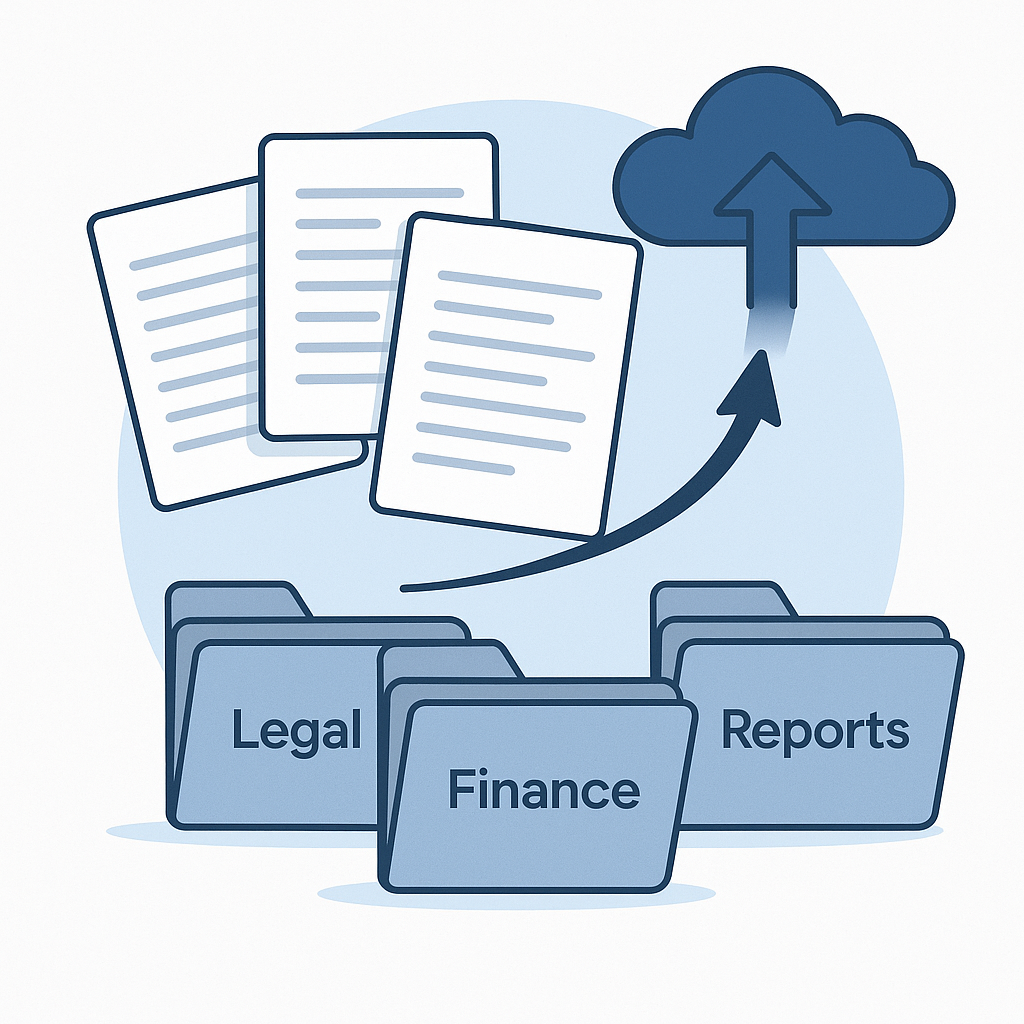
Click "Add to Knowledge Base" or "Upload Documents."
Create this structure:
📁 Product_Documentation
- HealthTrack_Pro_User_Guide.pdf
- Feature_List_Complete.pdf
- System_Requirements.pdf
- Integration_Capabilities.pdf
📁 Troubleshooting
- Login_Issues_Solutions.md
- Data_Sync_Problems.md
- Report_Errors_Guide.md
- Mobile_App_Issues.md
📁 Compliance
- HIPAA_Compliance_Summary.pdf
- Data_Security_Protocols.pdf
- Privacy_Policy_Quick_Reference.pdf
Pro tip: Create one master troubleshooting document that's AI-optimized:
File: Login_Issues_Solutions.md
# Login Issues - Quick Solutions ## Problem: "Invalid Credentials" Error **What's happening:** Wrong password, caps lock on, or account locked from failed attempts **Solution (90% success rate):** 1. Verify caps lock is OFF 2. Confirm they're using correct email (not username) 3. Check for password reset email in last 90 days 4. Try "Forgot Password" reset 5. Check admin panel for account lock status **Resolution time:** 2-5 minutes **Escalate if:** Still failing after password reset + account unlock --- ## Problem: Two-Factor Authentication Not Working **What's happening:** Device time sync issue or lost backup codes **Solution:** 1. Have user check device time is set to automatic 2. Try backup codes if they saved them 3. Request 2FA reset from administrator 4. User re-enrolls in 2FA after reset **Common mistake:** Users screenshot the QR code instead of scanning it properly **Resolution time:** 5-10 minutes **Escalate if:** Admin reset doesn't work - possible account corruption
Upload 15-20 documents like this covering your main support topics.
Step 5: Configure Your Parameters
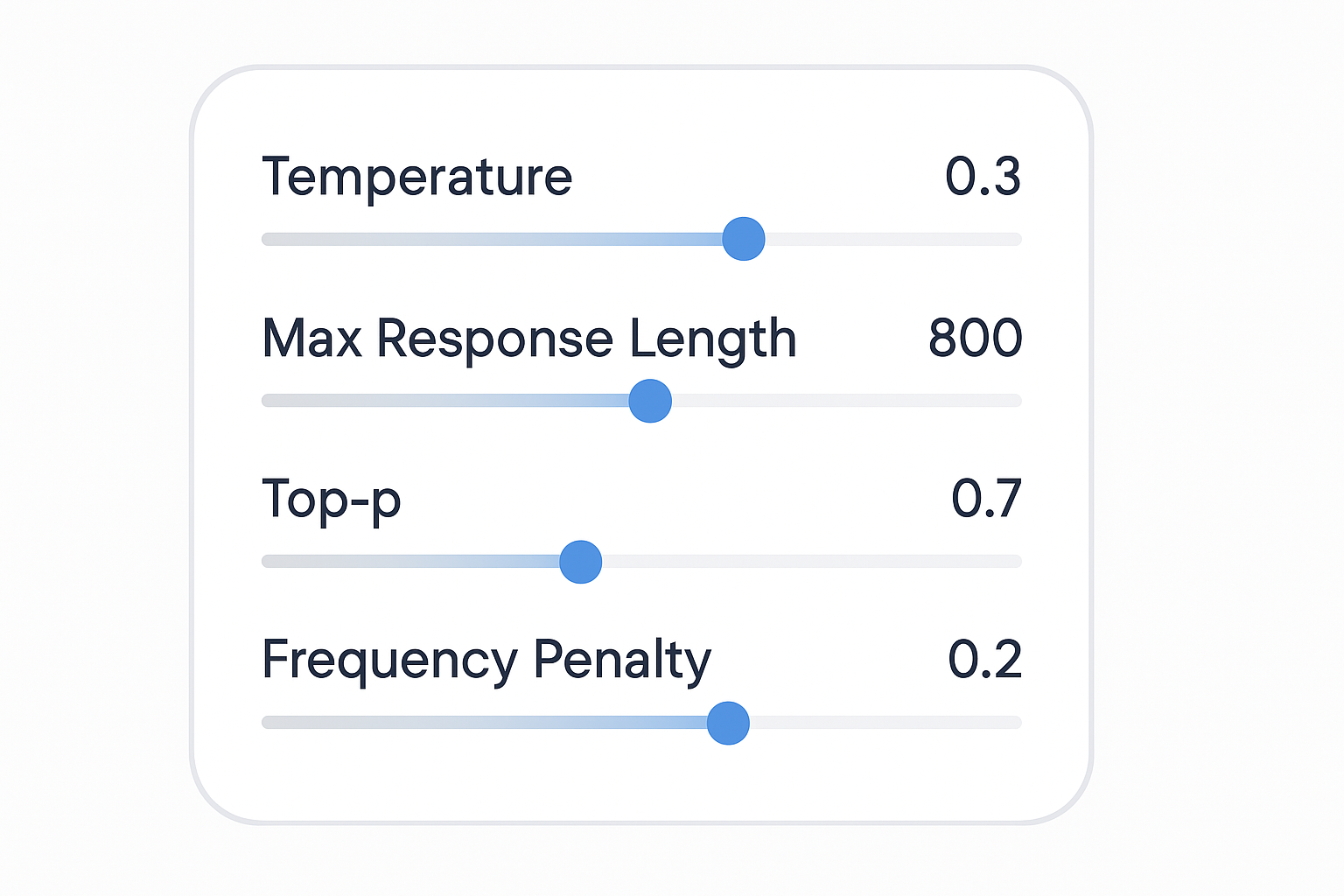
Temperature: 0.3
Why: Support needs consistent, reliable answers. No creativity required.
Max Response Length: 800 tokens (≈600 words)
Why: Enough for detailed steps, but not overwhelming walls of text.
Top-p: 0.7
Why: Keeps responses focused and on-topic.
Frequency Penalty: 0.2
Why: Prevents repetitive phrasing in step-by-step instructions.
Step 6: Save and Deploy
Hit "Save Model" or "Create Model."
Done. Your model is now live: Support Assistant v1
Step 7: Watch It Work
Your support team opens the AI chat. They select "Support Assistant v1" from the model dropdown.
Now every conversation automatically includes:
- ✅ Claude Sonnet 4.5 intelligence
- ✅ Your custom system prompt
- ✅ Access to all your documentation
- ✅ Optimized parameters for support
Let's see what happens...
Real Conversations - Your Model in Action
Example 1: Routine Login Issue
Support Agent types:
"Customer can't log in. Says invalid credentials. Already tried resetting password twice. Help?"
Support Assistant v1 responds:
"Quick diagnosis: Likely caps lock, wrong email, or account auto-locked.
Resolution path:
First, verify basics:
- Caps lock is OFF (most common culprit)
- They're using their EMAIL (not username)
- Check if they received the password reset emails
Then check admin panel:
- Account status: Active or Locked?
- Failed login attempts: If 5+, account auto-locks for 30 minutes
- Email on file: Does it match what they're using?
The usual fix (90% of cases):
Account is auto-locked. Either wait 30 minutes or manually unlock in admin panel.
Still not working?
Create Engineering ticket - possible database sync issue.
Expected resolution: 2-5 minutes
Reference: Login_Issues_Solutions.md for detailed steps"
What just happened:
The AI pulled from your knowledge base, gave step-by-step guidance, estimated resolution time, and knew when to escalate. Your agent gets an instant solution instead of searching through docs.
Example 2: Compliance Question
Support Agent types:
"Customer asking if we're HIPAA compliant and where we store patient data. Need to respond ASAP."
Support Assistant v1 responds:
"Fast compliance answer:
HIPAA Compliance: YES
- Full HIPAA compliance certified
- BAA (Business Associate Agreement) available
- SOC 2 Type II certified
- Regular third-party security audits
Data Storage:
- Secure cloud infrastructure (AWS healthcare-compliant)
- Encryption: AES-256 at rest, TLS 1.3 in transit
- US-based data centers only
- Comprehensive audit logs
What to tell the customer: 'HealthTrack Pro is fully HIPAA compliant with bank-level encryption. Your patient data is stored in secure, US-based, healthcare-compliant data centers. We can provide our BAA and detailed compliance documentation.'
Send them: HIPAA_Compliance_Summary.pdf from knowledge base
Escalate to Security Team if: Customer needs technical deep-dive on encryption protocols or wants security architecture review.
Expected resolution: Immediate answer, documentation sent
Reference: HIPAA_Compliance_Summary.pdf"
What just happened:
The AI knew this was a compliance question, provided accurate information, gave the agent exact words to use, referenced the right document, and knew when to escalate. Your agent looks like a compliance expert.
Why This Works (And Why Most Companies Fail)
Most internal AI implementations fail because companies:
- Dump random documents without organization
- Write vague prompts like "be helpful"
- Use default settings for everything
- Never iterate or improve
You just learned the opposite approach:
- ✅ Strategic, organized knowledge base
- ✅ Specific, detailed system prompt with clear identity and rules
- ✅ Configured parameters for your exact use case
- ✅ Real examples showing it works
This isn't theory. This is the exact process companies use to build AI that actually delivers value.
Scale It: Build Models for Every Team
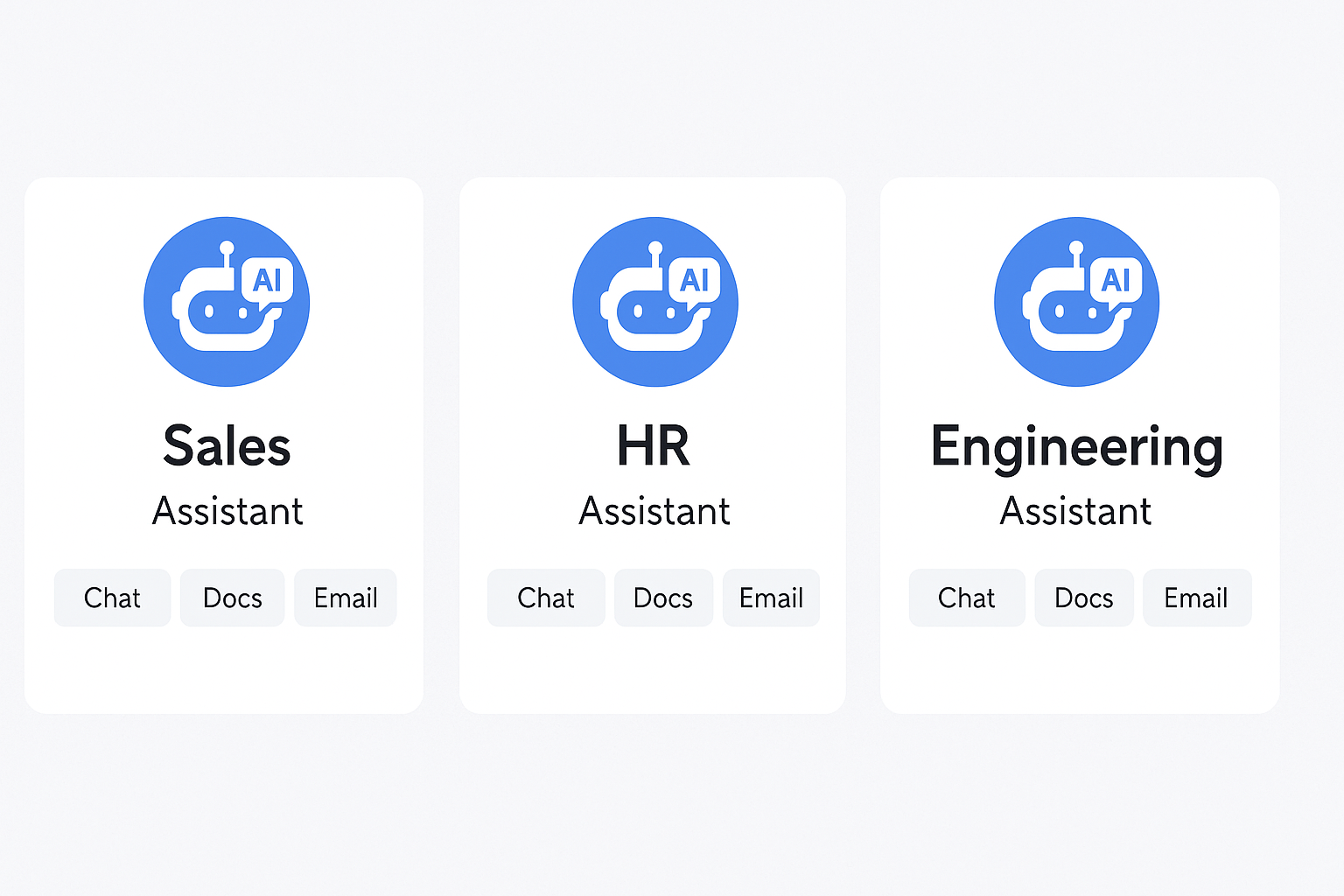
Now that you've built one successful model, replicate the process:
Sales AI Model:
- LLM: GPT-4o (better at creative, conversational responses)
- Temperature: 0.6 (more natural for sales conversations)
- Knowledge: Product specs, case studies, competitor battle cards, pricing guides
- Prompt: Sales-focused—objection handling, discovery questions, competitive positioning
Engineering AI Model:
- LLM: Claude Opus 4 (handles complex technical reasoning)
- Temperature: 0.2 (maximum precision for code and architecture)
- Knowledge: Technical docs, code standards, architecture guidelines, API docs
- Prompt: Technical accuracy first—no guessing, cite documentation, escalate when uncertain
HR AI Model:
- LLM: Claude Sonnet (balanced, empathetic)
- Temperature: 0.5 (warm but consistent)
- Knowledge: Policies, benefits, procedures, onboarding materials
- Prompt: Confidential, empathetic, clear boundaries on what can/can't be discussed
Each team gets an AI that speaks their language, knows their information, and follows their rules.
Common Mistakes That Kill Your AI (And How to Avoid Them)
Mistake #1: Knowledge base chaos
Uploading everything creates noise. The AI can't find relevant info in a haystack of documents.
→ Fix: Be selective. Organize. Create AI-specific summary documents.
Mistake #2: Generic system prompts
"You are a helpful assistant" teaches your AI nothing about your business.
→ Fix: Use the framework above. Specific role, clear rules, defined boundaries.
Mistake #3: Set it and forget it
Your business changes. Your AI's knowledge doesn't update itself.
→ Fix: Monthly reviews. Update docs. Refine prompts based on real usage.
Mistake #4: Ignoring user feedback
Your team discovers what works and what doesn't. Listen to them.
→ Fix: Create a feedback channel. Track common issues. Iterate fast.
Mistake #5: Analysis paralysis on parameters
Tweaking 47 different settings wastes time.
→ Fix: Start with temperature and length. Optimize those first. Add complexity only if needed.
Your Step-by-Step Action Plan
Ready to stop settling for weak AI? Here's your exact next steps:
Week 1: Choose one high-value use case
Pick customer support, sales, or onboarding. Don't try to do everything at once.
Week 2: Build your knowledge base
Gather 15-20 key documents. Organize them logically. Create AI-optimized summary docs.
Week 3: Write your system prompt
Use the framework above. Be specific. Define boundaries. Give it personality.
Week 4: Configure and test
Set temperature and length. Test with real team members. Gather feedback.
Week 5: Iterate based on usage
Watch what questions people ask. Identify gaps. Update knowledge and prompts.
Month 2: Expand to next use case
Replicate what worked. Build your second model faster than the first.
Need Expert Help? We've Got You

Look, setting this up isn't rocket science, but it's not trivial either. If you want to skip the trial-and-error and get it right the first time, talk to experts who've done this dozens of times.
The team at ReplyAutomation.com specializes in AI implementation and configuration. They can help you:
- Design optimal knowledge base structures for your industry
- Write high-converting system prompts that actually work
- Configure parameters for your specific use cases
- Train your team on best practices
- Troubleshoot when things aren't working
- Scale across multiple departments efficiently
Sometimes the fastest way forward is learning from people who've already figured it out.
The Bottom Line
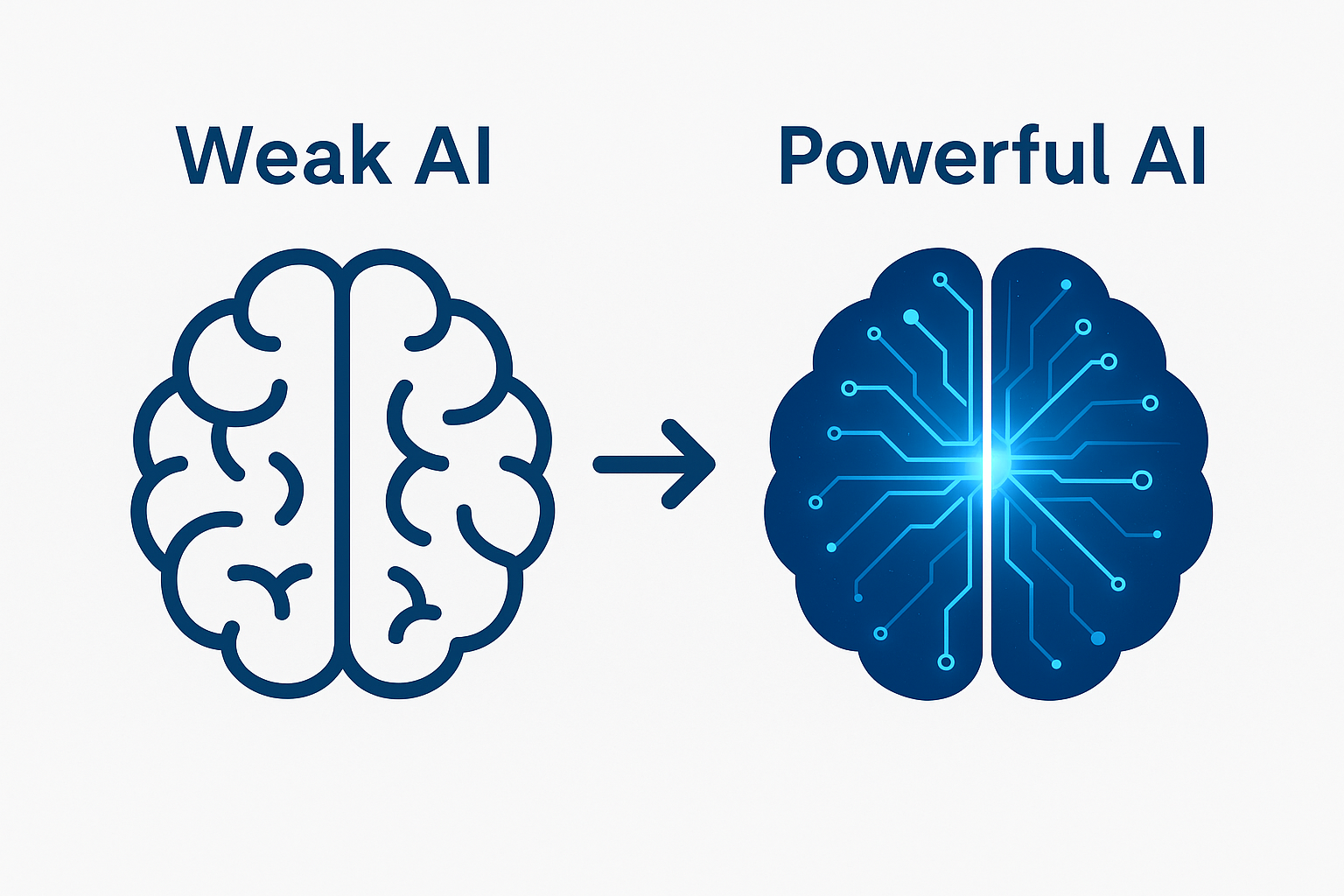
Your internal AI isn't dumb. It's just untrained.
The same AI brain that powers ChatGPT and Claude is sitting in your company's system right now, waiting for you to unlock it. The difference between a disappointing chatbot and an indispensable tool isn't technology—it's configuration.
Feed it the right knowledge. Give it clear instructions. Set appropriate parameters. That's it.
Companies winning with AI aren't using different technology. They're using the same technology differently.
Stop settling for weak AI that nobody uses. Build a beast that your team can't live without.
The potential is there. The tools are there. Now it's your move.
Ready to transform your internal AI? Start with one model using this guide, or get expert help at ReplyAutomation.com to accelerate your results.
